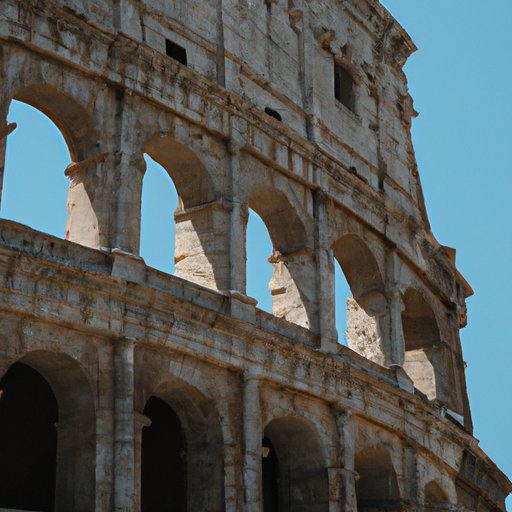Introduction
The Colosseum is an iconic symbol of ancient Rome that continues to fascinate and inspire people to this day. Built over 2,000 years ago, the amphitheater served as a site for grand spectacles, gladiatorial battles, and public executions. In this article, we will explore the historical significance and architectural design of the Colosseum, uncovering the cultural and socio-political context of its construction.
Historical Significance
At the time of the Colosseum’s construction, Rome was a dominant empire with a strong military presence and a complex social hierarchy. Several factors contributed to the building of the Colosseum, including the Emperor Vespasian’s desire to gain political favor with the masses and the Roman’s fascination with extravagant spectacles.
Moreover, the Colosseum represented an intersection of religion, politics, and power, as it was believed to be connected to many pagan gods and was used as a political tool by emperors to maintain control over the masses.
Architectural Design
The Colosseum was a masterpiece of architectural design, constructed with precision and ingenuity. The amphitheater’s elliptical shape and tiered seating allowed for optimal viewing, providing up to 87,000 spectators with an unobstructed view of the events taking place below. Additionally, the Colosseum’s advanced technological features allowed for the efficient movement of equipment and animals, including a series of underground tunnels, trapdoors, and a hydraulic system for flooding the arena.
Entertainment and Spectacle
The Colosseum was primarily used as a venue for public entertainment, providing citizens with a range of events that were carefully designed to showcase Rome’s power and wealth. These events included gladiator battles, animal hunts, and mock sea battles, all of which were designed to appeal to the masses and ensure their loyalty to the empire. Despite the often brutal nature of these events, they played an essential role in shaping the cultural identity of ancient Rome and served as a critical site for political and social discourse.
Political and Social Influence
As previously mentioned, the Colosseum was a powerful tool for emperors seeking to maintain control over the masses. It was also a symbol of Rome’s power and wealth, highlighting its influence in the region and beyond. Moreover, the Colosseum played a significant role in shaping the social hierarchy of ancient Rome, with seating arrangements reflecting the standing of different classes in society. The construction of the Colosseum was, therefore, both a reflection of the political culture of the time and a tool for shaping it.
Technical Challenges
The construction of the Colosseum was a massive undertaking that presented several engineering challenges for the Romans. The amphitheater stands 157 feet tall and covers an area of more than six acres, making it one of the largest structures of its time. Transporting the massive stones used in construction was a logistical nightmare, and it required the construction of specialized roads and waterways to facilitate their movement. Moreover, the Romans had to innovate new techniques, including pulleys and cranes, to raise the stones and fit them into their correct positions.
Conclusion
The Colosseum continues to be a powerful symbol of ancient Rome and a testament to its cultural, political, and architectural achievements. The amphitheater’s role in shaping Roman society and politics cannot be understated, providing a platform for public entertainment, spectacle, and dissent. Despite the many technical challenges faced by the Romans in its construction, the Colosseum remains one of the most enduring and timeless marvels of human engineering.
